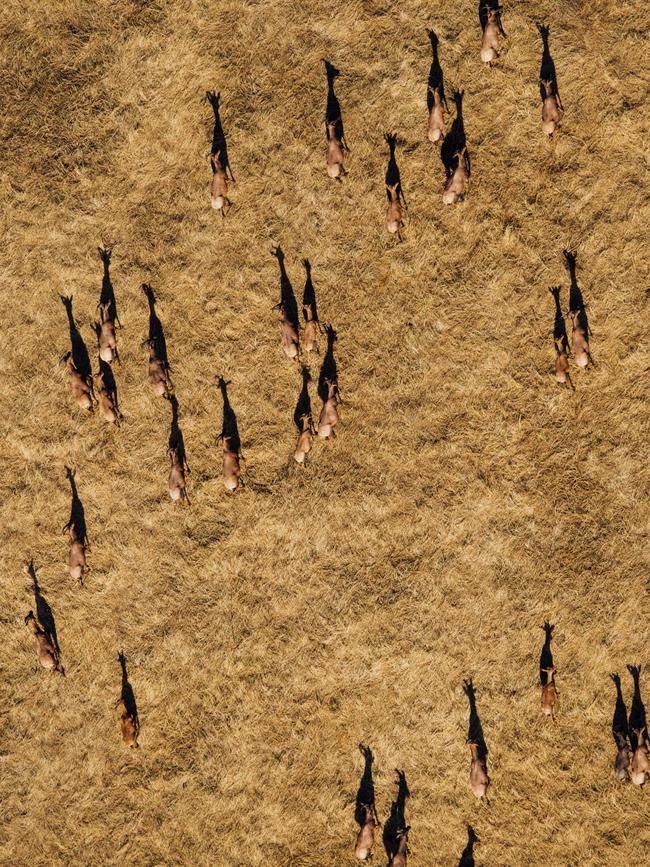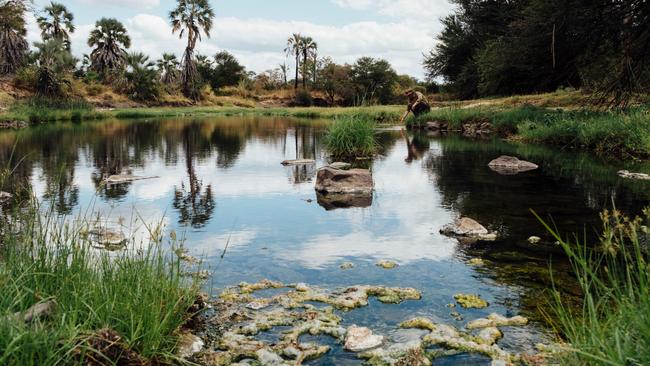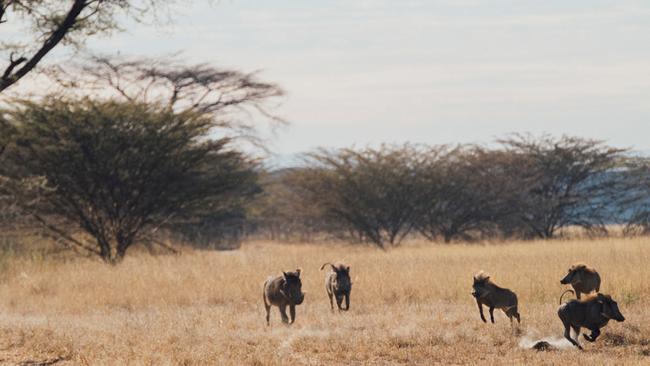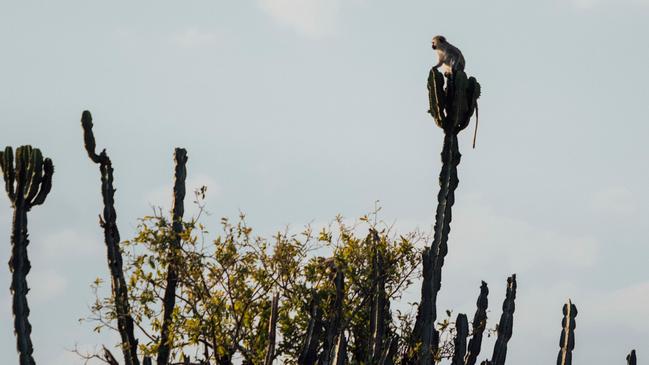Looking for leopards in Tanzania
For adventurers willing to brave rough roads and tsetse flies in this remote frontier, there’s a golden prize – if they’re lucky.

The email is brief but irresistible. “Would you be keen to come and collar a leopard with me in a wild part of Tanzania’s Ruaha National Park?” The sender is a friend who works for Asilia Africa, a conservation-led safari operator with 18 lodges and camps in East Africa. Its latest, Usangu Expedition Camp, is about to open in an uncharted region of central Tanzania. I say yes immediately.
Next thing I’m touching down at a pink-earth airstrip after an early morning flight from Dar es Salaam. Tiny Msembe airport is the main gateway to Ruaha, Tanzania’s wildest national park. It’s also handy to Jabali Ridge, where I’ve booked in some R & R before the real adventure begins in Usangu.
Jabali, Asilia’s flagship lodge, is a whimsical arrangement of eight airy suites tucked into a granite hillside. All accommodation plus the dining, lounge and hilltop pool have stirring views over baobab-studded savanna. Dawn and dusk game drives reveal elephants, lions, buffalo, myriad birds and unsung wonders of the African bush such as bat-eared foxes. At night, I lie awake listening to lions roar and elephants rumble. Thrilling.


Kiwi pilot Hamish Rendall, who’s out here chasing rogue cattle herders from the national park, offers me a scenic flight over the southern flood plains to check out Usangu from the air and hopefully see some wildlife.
The flight path takes us over the vast, 2.4 million sq km Miombo Forest, an uninterrupted green belt extending from Angola to Mozambique.
“It’s possible to fly for an hour, more than 130 miles (200km), and be over these woodlands the entire time,” Rendall says as we glide over the colourful tapestry of trees. When the forest clears we trace the mirrored ribbon of the Great Ruaha River, where hippos cluster like shiny pebbles on the shore. Further south the river bleeds into the landscape, forming wetlands where impressive herds of antelope – sable, roan, topi and eland – thunder across the terrain at our approach. Crocodiles vanish under water. Ostriches streak across shimmering grasslands.
“There are heaps of them here!” Rendall cries. He’s surprised. I’m speechless. I’ve never seen such diversity and numbers of animals, anywhere. It’s like finding yourself in a BBC Natural History shoot.
One moment I’m marvelling at the size of a herd of sable, one of the rarest antelopes; the next I’m dazzled by a stampede of zebras. Then dozens of giraffes canter off in the opposite direction, looking like ladders on the run. A large coven of carrion-eating marabous, the ugliest storks on Earth, admire their reflections.

After the 45-minute flight I feel like I’ve seen all the animals of Africa. This is Usangu? I can’t wait to get down there.
The reasons these prodigal wetlands have been ignored until now are simple: lack of access, and tsetse flies. The Miombo Forest is an ecological haven but it is also home to fierce swarms of devil insects. To reach (tsetse-free) Usangu guests must run the gauntlet of what locals call “the Cursed Forest”, a place Asilia’s country director for Tanzania, Brandon Kemp, knows only too well. He spent three months in these woods carving out the camp’s 37km access road, so he’s keenly aware of the need to protect guests from ravenous bugs.
‘I’m speechless. I’ve never seen such diversity and numbers of animals, anywhere’
Hence the ride from Jabali is in purpose-built vehicles; steampunk mash-ups of Land Rover chassis and V8 Range Rover engine converted to biofuels and fitted with tsetse-proof screens. (There’s no record of sleeping sickness here; the insects are more nuisance than existential threat.)
I hear the camp before I see it. Voices and drums rise from a grassland clearing as we arrive to the neon-bright smiles of Usangu staff. All are local, recruited from villages adjoining the national park. What they lack in five-star flair is more than offset by an innate warmth and hospitality.

Usangu covers an area four times the size of Masai Mara but, unlike Kenya’s famed game reserve, there are no other hotels or lodges here. For now, this 6000sq km ecosystem belongs entirely to guests of Usangu Expedition Camp. Its simple but inspired design consists of four stylish platform tents, each 50sq m, with ensuite bathrooms, teak joinery and walls of (insect-proof) springform gauze framing grassy plains and the Makete Mountains. There’s a central pavilion, decorated with fish traps, paddles and old bicycles seized from poachers, that contains dining, lounge and bar. The latter consists of a campaign-style liquor cabinet and an upturned dugout canoe kitted with an ice bucket of wine, beer and fizzies, and there is also a hot drinks station.
Thanks to the lack of phone signal and wi-fi (available only in the research tent), our social network is the campfire and the mealtime conversations that take place around it. The firepit doubles as an ingenious bush kitchen. Using a grill designed by Kemp from three poachers’ bicycle wheels, and a mix of pots, pans and Dutch ovens, staff can cook anything from briskets to bread – even lasagne and birthday cakes – over embers and flames.
Usangu Expedition Camp is a partnership between Asilia and the British billionaire Jim Ratcliffe, who made his fortune in chemicals and fossil fuels. The concept is an authentic frontier experience, one where guests actively help catalogue this unexplored wilderness while contributing to animal conservation and human opportunity.

The biodiversity study is a novel collaboration between Asilia, the Tanzanian Wildlife Research Institute (Tawiri) and peak national parks body Tanapa. Since 2018, they have used camera traps, GPS collars and personal observations to reveal a flourishing web of life. Twice-daily expeditions give glimpses of its abundance.
One morning I’m ringed by thousands of stampeding topi antelopes for more than an hour. On a walking safari, we spot hyena prints and porcupine quills, dodge a family of curious warthogs and sneak up on scores of hippos wallowing in river mud.
At night we scan the bush with thermo-imaging cameras to find dik diks, jackals and bushbabies, their infra-red images beamed direct to a mounted iPad on the Land Rover. But the wealth of Usangu wildlife I saw from the air is harder to find on the ground, at least in these early days. There are good reasons for that: villagers and herders were only removed from this area in 1974 when it was proclaimed a “game reserve” which, by some twisted logic, allowed indiscriminate hunting until 2006 when Usangu was annexed to Ruaha National Park.
“When animals see vehicles here, they still think they’re going to be hunted,” explains Leena Lulanbala, assistant research manager at the camp’s Douglas Bell Eco Research Station, which is essentially a tent with wi-fi and a revolving roster of eager researchers keen to share their knowledge with guests.

Guide Anderson Pakomyus Mesilla, from nearby Tungamalenga village, says it could take three years for most animals to become habituated to human presence, “to lose their fear”. Each guest plays a small part in that process. The camp opened only in June last year but already, as I’ve seen, some creatures are becoming comfortable in our presence.
“It’s such an important ecosystem to protect,” Kemp stresses. “If we lose this, the most significant intact wilderness in southern Tanzania, then we’re left with isolated zoos.”
Guests also help out with the Usangu census. On game drives we’re given ID sheets for big cats and checklists for the type and number of species we see. We upload images to the iNaturalist app, a live database of global wildlife, set camera traps and use telemetry to track collared animals – currently lions, sable and roan.
Tawiri’s next goal is to collar two cheetahs, one leopard and, “if we’re lucky, wild dog”, says project veterinarian, Goodluck Charles Paul, who’s on a 10-day research posting at camp. The prospect of collaring a leopard is what lured me here. But despite Tawiri’s best efforts – laying out fresh goat meat, keeping vigil till dawn – the scientists fail to lure one during my stay.

But that’s OK. The week before I arrived, Ratcliffe stayed at Usangu hoping to collar a cheetah. Again, nature didn’t oblige. If he can’t collar a big cat with all his billions, I don’t feel so bad about missing out.
With deep pockets and such dedicated conservationists, the odds look good for Usangu. If it works, and I sincerely hope it does, this could become a model for protecting critical wildlife populations across the continent.
In the know
Usangu Expedition Camp opens only in the dry season, from June to November. Rates from US$700 ($1040) a person per night (minimum three-night stay), plus compulsory conservation donation of US$250 a person per day. Includes full-board accommodation, house drinks, game drives, guided walks, boating and airstrip transfers.
Kendall Hill visited Tanzania as a guest of Asilia Africa.





To join the conversation, please log in. Don't have an account? Register
Join the conversation, you are commenting as Logout